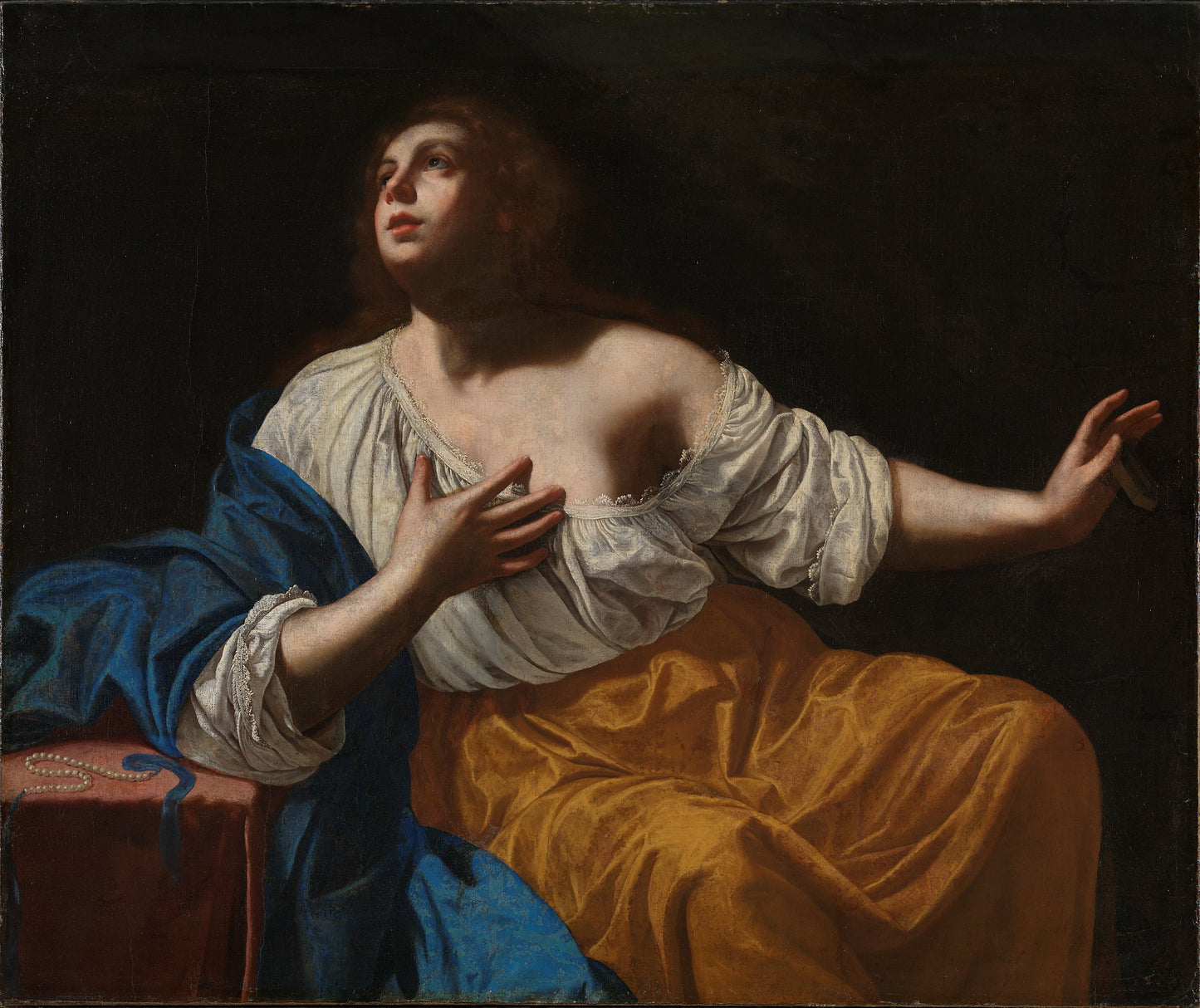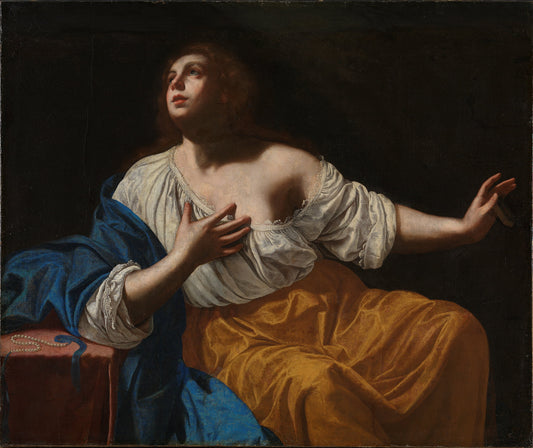Artemisia Gentileschi
The Forsaken Dido
The Forsaken Dido
Couldn't load pickup availability
Art reproductions with authentic colors and details. Posters are printed on 230g Litho White Matt photo paper with white border and logo. Artprints are printed on 260g Museum Natural Rag 100% cotton paper without white border and logo. Produced to order in our own print lab. From our exclusive collaboration with the National Museum.
About the original:
Dating: Approx. 1640
Other titles: Mary Magdalene Penitent (ENG)
Designation: Painting
Material and technique: Oil on canvas
Technique: Oil
Material: Canvas
Dimensions: H 112.9 cm x W 134.8 cm x D 2.7 cm
Subject: Visual arts
Classification: 532 - Visual arts
Type of motif: Religious scene or person
Acquisition: Gift from Betsy Cappelen 1866
Inventory no.: NG.M.00236
Part of exhibition: The dance of life. The collection from antiquity to 1950, 2011 - 2019
Older foreign art before 1915 from the National Gallery's collection, 2007 - 2008
Registration level: Single object
Owner and collection: The National Museum of Art, Architecture and Design, Visual Art Collections
Photo: Frode Larsen/Larsen, Frode
Shipping and returns
Shipping and returns
High-quality reproductions from the National Museum's collection. Posters by DAIDDA are printed on Litho White Matt - 230 gram photo paper in premium quality. Artprints by DAIDDA provide outstanding colors, sharpness and durability in museum quality - printed on Moab Entrada Natural 300 gram cotton art paper. Printed on a matte surface with scratch-resistant pigment ink.

See all works
-
The Forsaken Dido
Vendor:Artemisia GentileschiRegular price From 150,00 NOKRegular priceUnit price per

Artemisia Gentileschi
Artemisia Gentileschi was a female painter born into a family of artists in the 17th century in Rome. She was trained in the art of painting by her father, Orazio Gentileschi, along with her brothers. Artemisia was a successful painter who worked in several cities in Italy, as well as in London. Many of her works depict historical, allegorical or biblical women, and her style was closely linked to that of her father and teacher.
Gentileschi began her career as an apprentice in her father's studio when she was twelve or thirteen years old, and completed her education when she was seventeen. She began producing her own paintings, and her first signed and dated painting was from 1610. Due to her artistic background and skills, she was able to break with society's expectations of women at the time. Gentileschi's life story and large-format paintings of powerful women have become a symbol of the #metoo movement. In 1611 she was raped by a supposed friend of her father, and during the trial she was tortured to confirm that she was telling the truth. Although the case was won, she left Rome and went to Florence. There she was later married off to the artist Pierantonio Stiattesi from Florence, and thus had the opportunity to develop her own style independently of her father's studio.
Gentileschi spent time in Florence, Venice and London before settling in Naples, where she lived until her death. About 80 of her works have survived to the present day, and some new works have been added to her body of work due to increasing research into her career. Many paintings have been attributed to her on the basis of her style, and further research into painting techniques will hopefully help identify more of her works.



